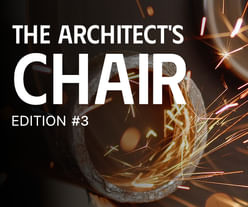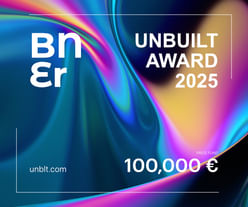

Four new UK residential developments have advanced to the 2024 Neave Brown Award for Housing shortlist. The RIBA unveiled the finalist projects today, stating that "this year’s shortlisted projects demonstrate social housing that blends quality design, community regeneration, and meaningful social value."
Among the finalists, London project Chowdhury Walk by Al-Jawad Pike has already been picking up awards and nominations all year, among them RIBA National and London Awards, and is now also in the running for the Stirling Prize and the Stephen Lawrence Prize.
The final winner will be revealed next month at the grand Stirling Prize ceremony. We'll keep you posted.
Chowdhury Walk, Hackney, London, by Al-Jawad Pike

RIBA citation: "Chowdhury Walk heralds an ambitious programme of new generation council homes by Hackney Council. The design’s articulated sculptural form gives it a strong, confident presence. It is an infill development of 11 houses that stands between two existing terraces and their gardens, on a plot previously occupied by garages and ad hoc car parking. The architects have arranged the houses in a two-storey staggered terrace, set along a newly created public thoroughfare for pedestrians and cyclists, with private patio gardens to the rear. Each home is oriented so that its frontage acknowledges the main approach road, while the staggering ensures they do not directly overlook their neighbours. With a mix of two- and three-bedroom houses and one fully accessible four-bedroom home, seven of the units are for social rent and four for private sale."
Dover Court Estate, Islington, London, by Pollard Thomas Edwards

RIBA citation: "Why shouldn’t homes for social rent match the private development domestic experience, with elegant, well-designed homes in a great setting and with a sense of security? Dover Court Estate cogently answers that question. A carefully implemented reimagining of a 1960s Modernist estate near Balls Pond Road in Islington, it is a blueprint for renewing existing social housing estates and helping to maintain and support communities. Delivering 70 homes across eight sites without relocation of residents, it carefully replaced disused garages with new buildings, and added a new ball court and community centre. Stitching together a formerly intimidating estate landscape, the architects have created a new series of welcoming spaces and buildings which can be enjoyed by all residents and visitors in this diverse community. The project exemplifies careful and considered briefing and design at every stage."
North Gate Social Housing, Glasgow, by Page\Park Architects

RIBA citation: "North Gate develops a longstanding vacant brownfield site, by providing a new residential city landmark, completing the Gorbals masterplan in Glasgow, Scotland. Containing 31 homes and comprising, 1 and 2 bed flats for 100% social rent, it is designed to suit the needs of primarily older residents. NGHA’s community-managed elected committee supported the project and provided continuous feedback throughout design development. This placed the needs of the community at the heart of the design."
Unity Place, Brent, London, by Feilden Clegg Bradley Studios, Alison Brooks Architects, and Gort Scott (Design Architects); RM_A Architect (Delivery Architects)


RIBA citation: "A key element in the 15-year South Kilburn Regeneration Programme, Unity Place successfully transforms the area with a neighbourhood of 235 social rent homes designed to integrate with its surroundings. It not only seeks to significantly enhance the living conditions of existing residents but also to complement the area’s architectural heritage, especially nearby St Augustine’s Church. The scheme offers 100% affordable homes across a mix of sizes and unit types, from one-bed single-floor flats to four-bed two-storey maisonettes, alongside community-focused amenities such as a hub, landscaped areas, publicly accessible playspace, and parking. It also features an energy centre for the wider South Kilburn estate. Infrastructure constraints and the proximity to conservation areas and listed buildings posed challenges for the design. The architects met these with a varied but unified scheme that reinstates historical street patterns, harmonising high-density housing with the surrounding low- to medium-rise buildings through contextually sympathetic materials."

MICROHOME Kingspan 2024/25
Register by Thu, Feb 13, 2025
Submit by Tue, Mar 18, 2025

250,000 € Prize / HOUSE OF THE FUTURE 2024/25
Register by Wed, Apr 30, 2025
Submit by Mon, Jun 2, 2025

The Architect's Chair / Edition #3
Register by Wed, Jan 15, 2025
Submit by Tue, Feb 18, 2025

100,000 € Prize / Buildner's Unbuilt Award 2025
Register by Thu, Oct 30, 2025
Submit by Thu, Nov 20, 2025
No Comments